Recent Storm Damage Posts
Protect Your Home with Winter Storm Damage Restoration
1/28/2025 (Permalink)
Winter storms can bring harsh conditions like heavy snow, freezing rain, and icy winds that may wreak havoc on residential properties. Homeowners in Yavapai County often face challenges such as roof damage, frozen pipes, and water intrusion. Addressing these issues quickly and effectively is crucial to preserving the integrity of your home.
When winter weather causes frozen pipes to burst, it can result in significant water damage. Prompt water removal, drying, and repair are essential to prevent further structural issues or mold growth. Heavy snow accumulation on roofs can also lead to leaks or even structural weakening, requiring immediate attention to avoid more extensive problems.
Having a reliable team of experts on your side makes all the difference during winter emergencies. Professional restoration teams specialize in repairing storm-related damage, ensuring your home is safe, dry, and secure. From fixing roof leaks to handling water extraction and drying, every detail is addressed with care and expertise.
Preventative measures, such as proper insulation and maintaining heating systems, can reduce the risk of storm-related damage. However, when damage occurs, professional services are your best option for efficient and thorough restoration.
If your home experiences winter storm damage, don’t wait to address it. Prompt action ensures safety and reduces long-term repair costs. Trust a dedicated restoration team to get your home back to its original condition quickly and professionally.
Contact us (928) 636-7600 today for trusted winter storm damage restoration services.
Tips for Securing Your Property Before a Storm Hits
1/9/2024 (Permalink)
As storm season approaches, it's important to take proactive measures to protect your property from potential damage. Strong storms can bring heavy rain, high winds, and even hail, which can wreak havoc on your home and belongings. By securing your property before a storm hits, you can minimize the risks and potential losses associated with severe weather. In this blog, we will share essential tips for preparing and safeguarding your property before a storm, allowing you to weather the storm with greater peace of mind.
Clear Your Surroundings
- Remove any loose or dead tree limbs that may pose a threat during high winds.
- Clear gutters and downspouts of debris to prevent water from overflowing and causing damage.
- Secure outdoor furniture, decorations, and other loose items that can become projectiles in strong winds.
Reinforce Doors and Windows
- Inspect and reinforce doors and windows to ensure they can withstand strong winds and debris impacts.
- Install storm shutters or plywood on windows to provide an extra layer of protection against flying debris.
- Consider reinforcing doors with heavy-duty hinges, deadbolts, or storm doors to minimize the risk of structural damage.
Secure Roof and Siding
- Assess the condition of your roof and repair any loose or missing shingles to prevent leaks and further damage.
- Reinforce roof connections and secure any loose elements, such as vents or satellite dishes.
- Examine siding for any signs of weakness or loose panels and take necessary measures to secure them.
Backup Power and Utilities
- Invest in a backup power generator to provide electricity during power outages, ensuring essential appliances like refrigerators and sump pumps remain functional.
- Learn how to shut off gas, water, and electricity to your property in case of an emergency or evacuation.
Create an Emergency Kit
- Prepare an emergency kit that includes essential supplies such as water, non-perishable food, flashlights, batteries, and a first aid kit.
- Include important documents, like insurance policies and identification, in a waterproof container.
- Keep a battery-powered radio or NOAA Weather Radio for updates and information during power outages.
Stay Informed
- Stay updated on weather forecasts and heed any warnings or evacuation orders issued by local authorities.
- Sign up for emergency alerts through your local community or government agencies.
- Establish a communication plan with family members or neighbors, designating a meeting point and emergency contacts.
Insurance Coverage Review
- Review your homeowner's insurance policy to ensure you have adequate coverage for storm-related damages.
- Understand your policy deductibles, exclusions, and filing procedures in case you need to make a claim.
Taking steps to secure your property before a storm hits can greatly reduce potential damage and risks to your home. By clearing your surroundings, reinforcing doors and windows, securing your roof and siding, and preparing an emergency kit, you'll be better equipped to weather the storm. Stay informed, review your insurance coverage, and prioritize the safety of yourself and your loved ones. Remember, early preparation is key to protect your property and ensure a faster recovery in the aftermath of a storm.
Mitigating Hail Damage After a Storm in Your Home or Business
9/24/2023 (Permalink)
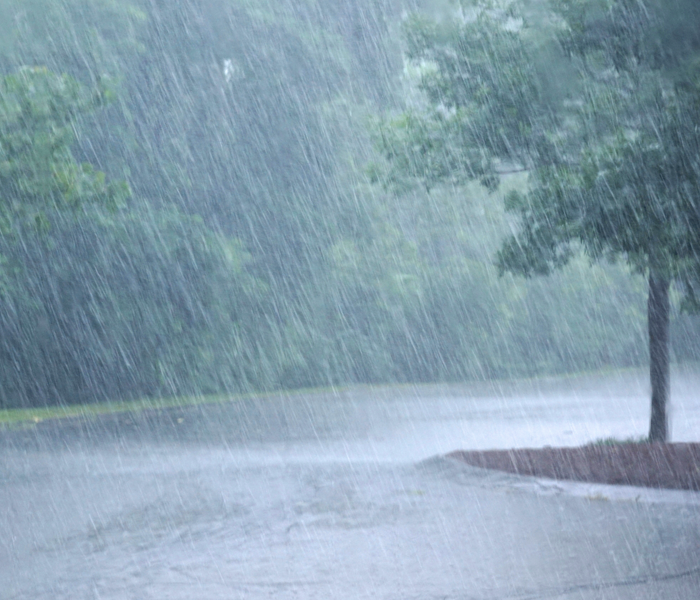 Hail damage may require action and inspection after a storm.
Hail damage may require action and inspection after a storm.
Hailstorms can be destructive and cause significant damage to your home or business. From shattered windows to dented roofs, dealing with hail damage can be stressful and costly. However, taking immediate action to mitigate the damage can make a big difference in the long run. In this blog post, we will discuss some steps you can take to mitigate hail damage after a storm, helping you restore your property and minimize further complications.
Inspect the Property
After a hailstorm, it's crucial to inspect your property for any visible signs of damage. Start by examining the roof for loose or missing shingles, dented gutters, or cracks. Check the windows, siding, and outdoor structures, such as sheds or awnings, for any hail-related damage. Take photos or videos of the damage as evidence for insurance claims.
Ensure that your property is safe before proceeding with any repairs. If there are broken windows or glass, take precautions to protect yourself and others from potential injuries. Cover broken windows with boards or tarps and avoid walking on damaged areas that may pose a risk of collapse. If electrical wiring or gas lines are affected, seek professional help and shut off the utilities if necessary.
Document the Damage
Make a detailed inventory of the hail damage to your property. Note the specific areas and extent of the damage, including any personal belongings that have been affected. This documentation will be vital when filing an insurance claim.
Notify your insurance company as soon as possible to report the hail damage. Provide them with the necessary documentation, including photos, videos, and a detailed description of the damage. Follow their instructions regarding the claims process and any required repairs or assessments by adjusters.
Temporary Repairs and Mitigation
To prevent further damage to your property, consider making temporary repairs. Cover broken windows or damaged areas with tarps or boards to protect against water intrusion. If your roof is compromised, use waterproof material to cover exposed areas. Be sure to consult with professionals or contractors, as they will have the expertise and knowledge to perform temporary repairs effectively.
Engage the services of a professional restoration company experienced in handling hail damage. They will assess and evaluate the extent of the damage and provide the necessary repairs or replacements. Look for reputable companies with a proven track record in restoration work, preferably those experienced in dealing with hail damage specifically.
Maintain Communication with Your Insurance Company
Throughout the restoration process, maintain open and ongoing communication with your insurance company. Keep them updated on the progress of repairs and provide any additional information they may require. This will help ensure a smooth claims process and any necessary reimbursements.
While hail damage is often unavoidable, taking preventive measures can minimize the impact of future storms. Consider installing impact-resistant windows, reinforced roofing materials, or protective coverings for vulnerable areas. Trim trees near your property to reduce the risk of falling branches during storms. Regular maintenance and inspections can also help identify and address potential issues before they become more severe.
Mitigating hail damage after a storm requires prompt action and careful consideration. Inspect your property, address immediate safety concerns, document the damage, and contact your insurance company. Make temporary repairs to prevent further damage, hire professional restoration services, and maintain communication with your insurance company throughout the process. Taking these steps will help restore your property and minimize any complications caused by hail damage. Additionally, considering preventive measures for future storms can provide added protection and peace of mind against the destructive effects of hail.
Weathering the Storm: Essential Tips to Avoid Costly Storm Damage
6/27/2023 (Permalink)
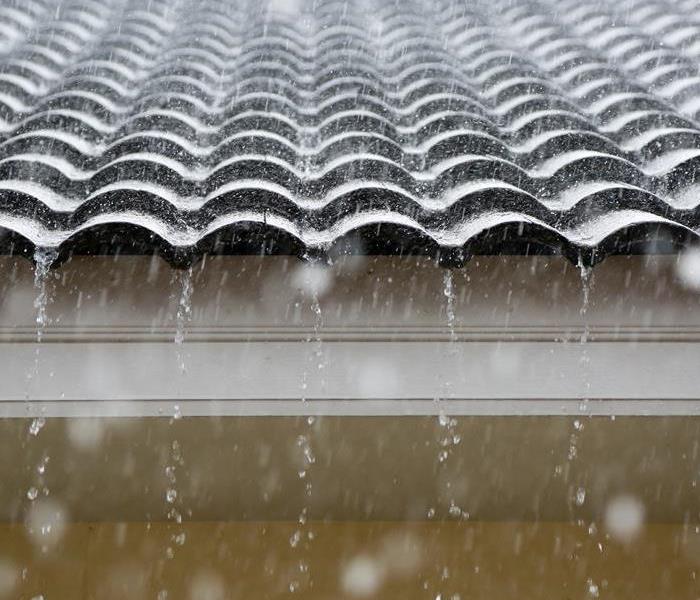 Essential tips to avoid storm damage.
Essential tips to avoid storm damage.
Severe storms can wreak havoc on your home, causing significant damage and financial strain. However, with careful preparation and proactive measures, you can minimize the risk of storm-related destruction. In this blog, we'll guide you through essential tips and strategies to help you protect your home from storm damage, ensuring the safety and security of your property and loved ones.
Maintain Trees and Vegetation
Trim tree branches and remove dead or weak limbs to prevent them from falling on your home during strong winds. When planting new trees, consider their potential size and proximity to your home. Choose species that are less prone to breakage and avoid planting too close to structures or power lines.
Reinforce Doors and Windows
Invest in storm shutters to protect windows from flying debris. If shutters are not an option, consider using plywood to cover windows during severe weather. Reinforce exterior doors with heavy-duty locks, sturdy hinges, and a door frame reinforcement kit to withstand high winds.
Secure Outdoor Items
Before a storm hits, secure or bring indoors any outdoor furniture, garden tools, potted plants, or other loose objects that could become projectiles in strong winds. Ensure sheds, playsets, and other outdoor structures are properly anchored to prevent them from being lifted or damaged by powerful gusts.
Clear Gutters and Downspouts
Clean your gutters and downspouts to prevent blockages that can lead to water overflowing and causing damage to your roof or foundation. Consider installing extensions to direct water away from your home's foundation and prevent water accumulation near the structure.
Reinforce the Roof
Schedule professional roof inspections to identify and address any existing weaknesses, such as loose or damaged shingles. Consider installing hurricane straps or clips to reinforce the connection between your roof and the walls of your home, providing added protection against high winds.
Create a Disaster Preparedness Kit
Assemble a comprehensive disaster preparedness kit that includes essentials such as flashlights, batteries, non-perishable food, water, a first aid kit, and a battery-powered radio.
Keep important documents in a waterproof and easily accessible place, including insurance policies, identification documents, and contact information for emergency services.
While we cannot control the weather, we can take proactive measures to minimize the potential impact of storms on our homes. By implementing these essential tips, from maintaining trees to securing doors and windows, clearing gutters, and creating a disaster preparedness kit, you'll be better equipped to avoid costly storm damage. Remember, preparedness is key, so invest time and effort into protecting your home and ensuring the safety of your family when faced with severe weather conditions.
Important Information on FEMA Payments
8/11/2022 (Permalink)
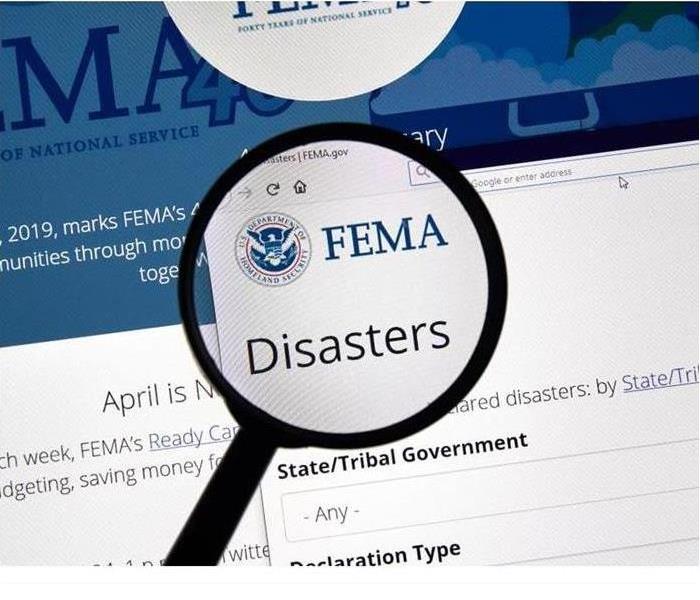 Anything that is not covered by your insurance company could be paid for by FEMA disaster assistance programs
Anything that is not covered by your insurance company could be paid for by FEMA disaster assistance programs
Information on FEMA Payments
If you have recently experienced a flood, you will have a lot of expenses, from finding a remediation company to renting a home. The good news is that anything that is not covered by your insurance company could be paid for by FEMA disaster assistance programs.
Making a Claim
After registering with FEMA, you need to start the claim process for your home in Prescott Valley, AZ. Here are the steps you must take:
- Contact your insurance company and file a claim
- Take photos of the damage to your property
- Meet with your insurance agent
- Collect documents related to your damaged property
- Get proof of loss
- Fill out your application for relief
Average Claim Payments
The amount of relief you receive is based on your individual loss. However, you can expect to receive several thousand dollars from FEMA if you do not have adequate insurance.
Eligibility Information
If you have the ability to acquire temporary housing on your own, you will not be able to receive a place through the program. However, if you cannot afford a hotel or rental property, the relief program can offer you temporary housing. Additionally, if you do not have enough insurance to replace all of your home and personal belongings damaged, you can receive funds through the program.
Waiting Periods
Before you can get paid, you will need to provide adequate documentation of your losses. Once you have turned in your proof of loss and finished your application, your information will be reviewed. This process can take a while and is known as the waiting period.
If you have recently experienced flooding or another natural disaster, you may want to know more about the disaster relief programs offered by the government. If you are eligible for relief and have made a claim, you will likely receive a chunk of money to pay for disaster-related expenses.
How Aid is Assessed After a Flood
7/7/2022 (Permalink)
 When your home is flooded as the result of a natural disaster, FEMA can probably help.
When your home is flooded as the result of a natural disaster, FEMA can probably help.
How Aid is Assessed After a Flood
When a natural disaster causes widespread destruction, the Federal Emergency Management Agency often steps in to provide assistance and aid to those displaced by the aftermath of the storm. If your home in Yavapai County is damaged by flooding, FEMA may send a housing inspector to assess your property. What follows is a thorough walkthrough that can result in receiving federal assistance for putting your home back together.
Initial Assessment
When inspectors arrive at your home, they document everything that needs to be repaired or replaced. If there is a lot of damage, this could take a while. They make a detailed list of problems, such as:
• Soaked carpet
• Ruined walls
• Damaged cabinets
• Destroyed items, such as furniture
They take pictures of your home and write down the extent of the problem. For example, if is completely soaked through, they include how many square feet of carpet was affected. The more details they can report, the better FEMA is able to assess your need.
Documentation Requirements
One thing that the inspector will need from you is proof that you own the home. This can be problematic if your deed was destroyed by the storm and you don't have a copy on hand. Getting the paperwork from the appropriate office will have to happen before you are eligible to receive any of the aid that the inspector says you qualify for.
Inspector Advice
The government inspector is not the only person who needs to assess your property. Your insurance company will likely send an adjuster, and if there are repairs to be done, you should call a flood remediation company so that repairs can begin as soon as possible.
When your home is flooded as the result of a natural disaster, FEMA can probably help. All that is needed is a thorough inspection and proof that you own the home for the inspector to determine whether or not you qualify for aid.
Flood Risks
6/9/2022 (Permalink)
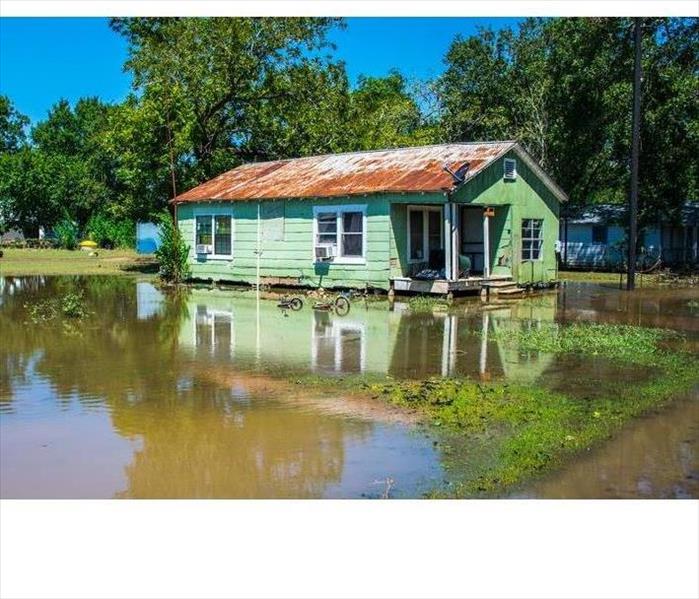 Knowing what kind of flood zone you live in can also be helpful for storage options and emergency preparedness.
Knowing what kind of flood zone you live in can also be helpful for storage options and emergency preparedness.
Flood Hazards
If you’re in the process of buying a house in Prescott Valley, AZ or you’re looking for a new home owners insurance policy, you might be familiar with what a flood zone is. If you don’t know what they are, you might want to start reading up on them.
Zoning for Floods?
A flood zone is an area in a specific geographical space that the Federal Emergency Management Agency has determined has at least some risk of flooding. There are four primary types of zones, which correlate to the severity or category of excessive water events that can occur in that area.
- Moderate to Low Risk Areas
- High Risk Areas
- High Risk – Coastal Areas
- Undetermined Risk Areas
How to Find Your Zone
Each area’s zones are depicted on a community's Flood Insurance Rate Map, also known as FIRM, which can be found online at https://www.fema.gov/flood-insurance-rate-map-firm. You can also contact your local municipality or look on their website, most of cities will have zoning information available online. You can try searching for the term “flood elevation certificate” for faster results.
Some people may think that these zones can only be found next to a large body of water or along a river or stream, but that’s not the case. Houses that are nowhere near a body of water can experience a flood if there’s a large rain storm.
Emergency Preparedness
Knowing what kind of flood zone you live in can also be helpful for storage options and emergency preparedness. If you live in a high-risk zone, for example, you probably don’t want to put boxes directly on the floor, and you might want to increase the number of your emergency supplies.
If you weren’t aware that your home is potentially at risk for a flood, and a storm causes water related damage, you should contact a storm damage specialist in your area to determine your best course of action and get the damage repaired as quickly as possible.
5 Ways Homeowners Can Prepare for Flooding
5/18/2022 (Permalink)
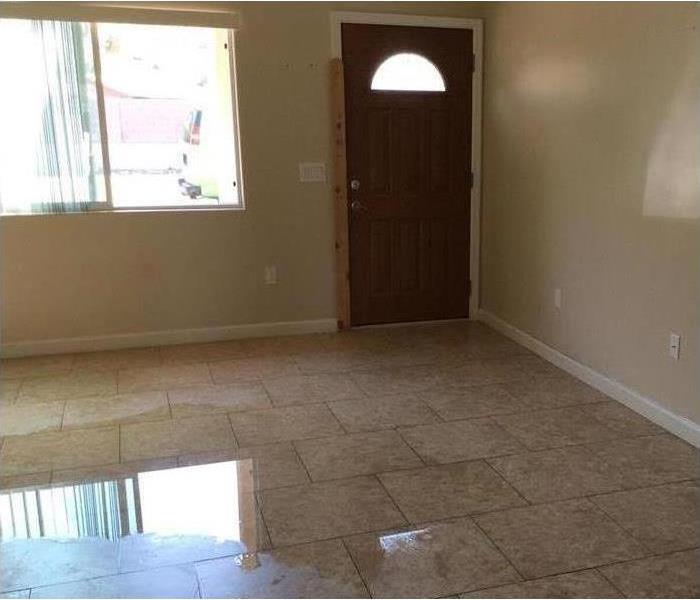 If you have storm damage, call SERVPRO, we respond immediately and begin clean-up procedures pertinently. Contact us for your storm loss emergency!
If you have storm damage, call SERVPRO, we respond immediately and begin clean-up procedures pertinently. Contact us for your storm loss emergency!
5 Flood-Preparation Strategies For Homeowners
When the weather turns severe, you want to minimize worrying about your Prescott Valley, AZ, home flooding. Although you can trust a professional water and storm damage restoration to get your home back to normal, it’s better to minimize the potential flood water damage. Below are five ways to get your home ready to weather the storm.
1. Keep Gutters Clean
One of the key causes of a flooded building is clogged downspouts and gutters. It is also one of the easiest ways to avoid excess water. Homeowners should clean their gutters twice a year to ensure rainfall flows where it should.
2. Reconsider Landscaping
Homes with lots of concrete and asphalt may want to consider a landscaping change. These impervious materials make the rain move faster, whether to your home or sewers. Planting a green space with plants that require high amounts of water or using pervious pavements provide natural absorbency of excess water.
3. Install a Flood Water Detector
With many homes becoming smart, make it even smarter with a flood sensor. These devices alert homeowners when water is detected. There are many different kinds on the market, but most have probes that set off an alarm when coming into contact with water.
4. Inspect the Foundation and Grading
Water must flow away from your home. Any cracks in the foundation are a welcome opening to create a flood issue. Along with regularly inspecting the foundation, check for any pooling water outside after rain to verify the grading is properly sloped.
5. Reinforce Basement Windows
Basement windows are another easy way for water to enter the home. Regularly check that they are tightly caulked and sealed. Installing window well covers is another way to minimize water building up.
Dealing with flood water is never pleasant. Taking the time to consider the tips above may reduce the potential or severity of flooding.
4 Steps to a Flood-Free Building
4/1/2022 (Permalink)
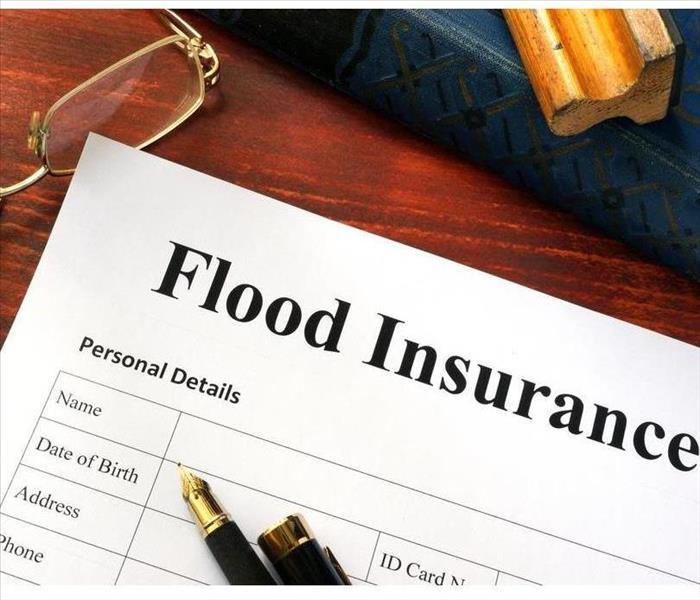 Be aware that not all insurance policies cover flooding, so make sure to add it to your comprehensive plan before the business' inauguration.
Be aware that not all insurance policies cover flooding, so make sure to add it to your comprehensive plan before the business' inauguration.
4 Steps To A Flood-Free Structure
Many decisions are involved in creating new business. Are you considering constructing a new commercial building? If so, several considerations must be made prior to breaking ground. One crucial concern that you must not overlook is the potential for flood damage. Proceed with these helpful tips in mind, and avoid the potential for a severe disaster.
1. Avoid a Flood Zone
Before breaking ground in Prescott Valley, AZ, check to see that your new project resides in an area not susceptible to flooding. Some regions to avoid are:
- Documented flood zones.
- Land near a lake, river, or other body of water.
- Locations with a relatively large amount of rainfall.
2. Secure the Building
Sometimes, building in a flood zone is unavoidable. If your location is at risk for flood damage, ensure the building is watertight and raised above the ground if situated near a body of water. Further, in regions prone to storm damage, install hurricane-proof windows and doors, and consider adding protective storm shutters.
3. Clean the Gutters
Rain gutters full of debris leave your building at risk for flooding. Large rubble like branches, leaves, and nests can cause a dangerous buildup of water and require immediate removal. Avoid the need for flood repair services by ensuring all gutters receive professional cleaning every six months. Further, safeguard your building by removing all debris and dirt from your roof. Tend to roof damage immediately, filling in any discernable holes and gaps.
4. Get Insurance
Even the most prepared business owners have the potential to experience water damage. Therefore, never open the doors to your new business before obtaining proper commercial building insurance. Be aware that not all insurance policies cover flooding, so make sure to add it to your comprehensive plan before the business' inauguration.
Flood damage is expensive, stressful, and potentially disastrous. Keep your business safe and water-free by following these simple steps.



 24/7 Emergency Service
24/7 Emergency Service






